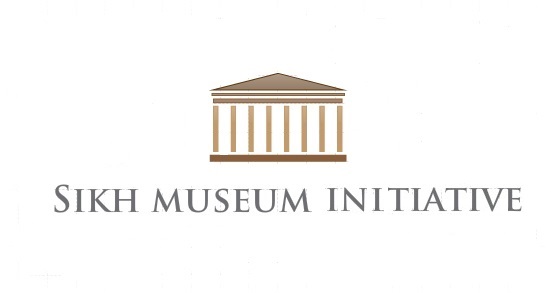Following up a best-selling book (Sri Dasam Granth Sahib: Questions and Answers. Archimedes Press) is hard to top, but that is what scholars Kamalroop Singh and Gurinder Singh Mann have achieved with the Granth of Guru Gobind Singh: Essays, Lectures and Translations (OUP).
The Sikhs believe in the primary scripture, Guru Granth Sahib, which is contains compositions from the Sikh Gurus and other saints. The verses in the scripture inspire a saintly vision to the Sikhs; however the fifth Guru being persecuted by the Mughals needed a new approach. Guru Arjan Dev started recruiting soldiers and as a result posed a threat to the authorities. He became a martyr but he instilled a military vision into his son, the sixth Guru Hargobind. He was aided by the saint, Baba Buddha who built up the Sikh army.
However it was Guru Gobind Singh who renewed a new energy into the Sikhs by creating the Khalsa, or the fraternity of the pure. As the Guru Granth Sahib was being completed Guru Gobind Singh, the last in line of the Sikh Gurus, was busy composing battle verses to inspire his mission. This was formulated in the scripture, Dasam Patshah ka Granth or the Dasam Granth. The authors argue that it was the compositions like Jaap Sahib, Shastar Nam Mala etc that guided the Sikhs to victory in the eighteenth century.
What is the Proof?
Apart from the historical manuscripts unearthed by the scholars,(and there is plenty of them), they show how it was not only the manuscripts which inspired the Sikhs but the verses which were to be inscribed onto the weapons like swords, breast plates as well as copper plates (to show instructional messages). Some of the later manuscripts made it to the UK and which they cite including a rare pothi (brevary), containing compositions from both the Guru Granth Sahib and the Dasam Granth, which shows the formation of the Nitnem in an early phase.
The book cites numerous rare sources from the time of Guru Gobind Singh to the present day. It is important to note that many writers as opposed to research scholars have claimed that there is no proof of Guru Gobind Singh writing the text, this book destroys this argument and begs the question: what else has been eroded over the last 100+ years in Sikh history. The authors point to the traditional orders the Akali Nihangs and others for this answer. Whilst the Akalis held sway over the institutions like Takhts (thrones of polity), the scriptures were intact but with the British massacring the Akalis in the Anglo-Sikh Wars, their numbers dwindled. The Sikhs became part of the British colonial system and were prone to their intrusions. At the time of the Singh Sabha movement revisionist needed to create a more modern version of the Sikhs and as a result the Dasam Granth and the Akalis would be a casualty in this modern Sikh world.
The Debate
It is quite clear even with the coming of the SGPC, and after the attack on the Golden Temple (i.e 1984), a so called debate on the Dasam Granth is too late. Moreover every year that passes more evidence comes to light showing how important and powerful the Dasam Granth was to the Khalsa. Charitropakhyan could not be written by Guru Gobind Singh, well why is there manuscripts written in the hand of Guru Gobind Singh? The authors show that the Sikh world has been caught up in a needless polemic debate over the years and bears no relation to the real impact that Guru Gobind Singh compositions had on the Sikhs.
What do the compositions say?
The authors write that the compositions inspired the Sikh into war. There are translations from the apocryphal texts which did not make the edited version of the Dasam Granth in the late nineteenth century. This is the first time a number of these texts have been translated into English in a meaningful way (Nishan i Sikhi, Sri Bhagauti Asatotra, Sanshara Sukhmana etc). These compositions are in line with others in the standard text and the common themes of war are on the upper lips of the Guru when reciting them. The so called 5k’s is shown to be prominent within these excluded texts something that is not alluded to in the standard compositions, this points to a post Khalsa dating of writing.
The Modern Era
One chapter is devoted to the composition Shastar Nam Mala and shows how the weapons of the Sikhs have been instrumental to their success in battle. Using the Quoit (Chakkar) as an example they show how it was employed against their foe whether it was the Mughals or the British. In the Anglo-Sikh Wars, the British saw the Chakkar as an instrument of choice for the Khalsa warrior. As a result the weapon of the Sikhs is not just weapons but one which is elevated to the status of god.
Concluding
The authors have undertaken the most extensive review of manuscripts, literature, anecdotes and oral history and written one of the most fascinating books on Guru Gobind Singh if not Sikh history. Each page compels the read through a three hundred year journey and shows how recent interpretations of the Dasam Granth are flawed. This book is highly recommended and is not a purchase but an investment for future generations.
The Granth of Guru Gobind Singh: Essays, Lectures and Translations
- Hardcover: 304 pages
- Publisher: OUP India (29 Oct. 2015)
- Language: English
- ISBN-10: 0199458979
- ISBN-13: 978-0199458974
can be bought from all good bookshops as well as the Oxford University Press websites and Amazon.

